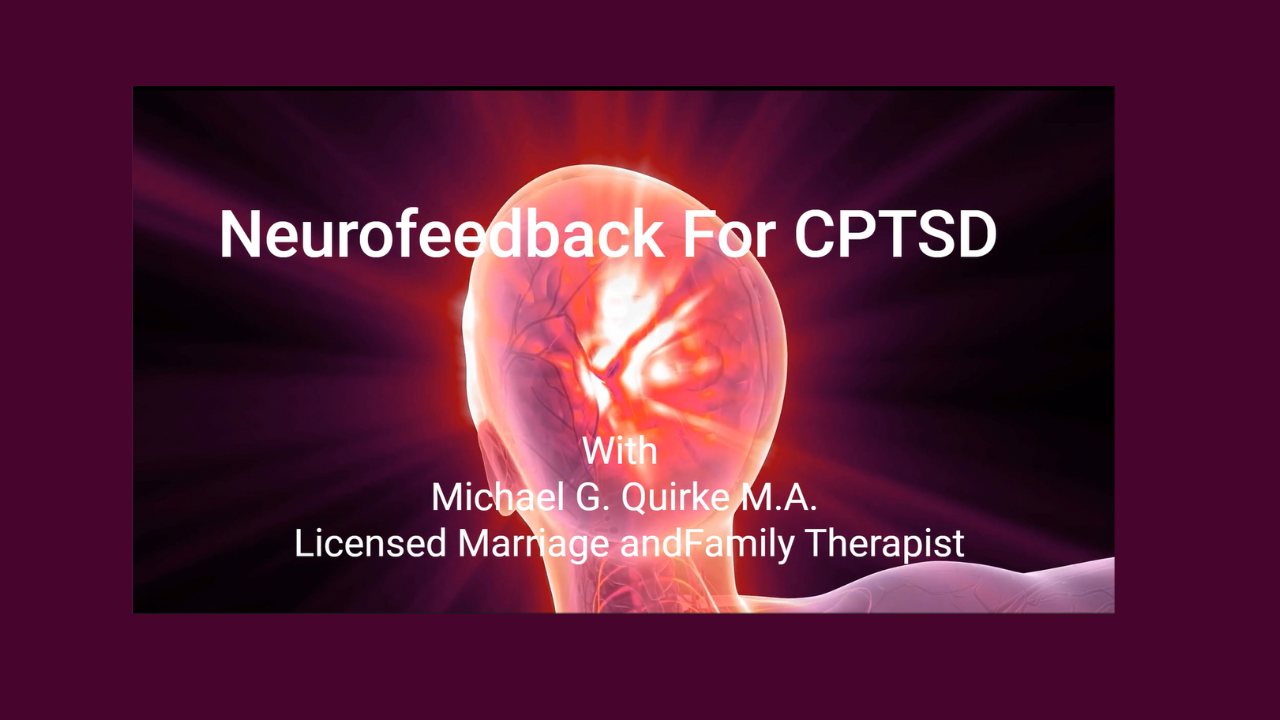Introduction to Neurofeedback
Neurofeedback trauma therapy is an innovative therapeutic approach that leverages real-time displays of brain activity to teach self-regulation of brain function. This technique is gaining prominence, especially in the realm of trauma therapy, where individuals strive to recover from traumatic experiences. By training patients to alter their brainwave patterns, neurofeedback trauma therapy aims to enhance emotional regulation, reduce symptoms of post-traumatic stress disorder (PTSD), and improve overall mental wellness. This article delves into the mechanics of neurofeedback trauma therapy, its benefits, techniques, and applications in trauma therapy, offering a well-rounded understanding of this evolving field.
Definition and Overview
At its core, neurofeedback is a type of biofeedback that focuses specifically on brain activity. Utilizing technologies such as electroencephalography (EEG), neurofeedback provides individuals with immediate feedback about their brain waves, allowing them to observe and modify their mental states consciously. This self-regulation is particularly beneficial for individuals recovering from trauma, as it enables them to identify and alter negative thought patterns and emotional responses. The objective is to foster a more resilient and adaptable brain, ultimately leading to improved mental health.
Neurofeedback trauma therapy is also beneficial for individuals dealing with anxiety and depression, helping them regain control over their emotional health.
Historical Context
The roots of neurofeedback date back to the 1960s when researchers began investigating the relationship between brain activity and various psychological states. Early experiments demonstrated that individuals could learn to control their brainwaves through operant conditioning. Over the decades, neurofeedback has evolved significantly, incorporating advances in neuroscience and technology, which have expanded its applications beyond simple brainwave training to sophisticated therapeutic interventions in trauma recovery and mental health management.
The Science Behind Neurofeedback
How Neurofeedback Works
Neurofeedback operates on the principle of operant conditioning, where individuals receive feedback on their brain activity in real-time, allowing them to learn how to modify their brainwave patterns. Typically, sensors are placed on the scalp to measure electrical activity in the brain, which is then processed and displayed on a screen. Patients engage with this feedback through various methods, such as video games or music, which are designed to encourage desirable brainwave patterns while inhibiting others. Over time, this practice can lead to long-lasting changes in brain function and emotional regulation.
The Brain and Trauma Connection
Furthermore, neurofeedback can facilitate neural plasticity, the brain’s inherent ability to reorganize and adapt in response to new experiences. This adaptability is crucial for individuals recovering from trauma, as it allows them to develop new coping mechanisms and enhance resilience. Neurofeedback trauma therapy aims to empower individuals with tools for emotional regulation. By fostering a supportive environment for neuroplastic changes, neurofeedback plays a pivotal role in the healing journey of trauma survivors.
Techniques Used in Neurofeedback Therapy
Types of Neurofeedback Systems
There are several types of neurofeedback systems available, each employing different technologies and methodologies. The most common types include traditional EEG neurofeedback, which measures and trains brainwaves, and newer modalities like functional MRI (fMRI) neurofeedback, which provides insights into brain activity using magnetic resonance imaging. Other emerging techniques involve near-infrared spectroscopy (NIRS) and transcranial magnetic stimulation (TMS), offering diverse avenues for brain training and therapeutic applications.
Each system has its strengths and weaknesses, and the choice of technology can depend on the specific needs of the patient and the goals of therapy. Traditional EEG neurofeedback remains widely used due to its accessibility and established efficacy, while fMRI neurofeedback is gaining traction for its ability to visualize deeper brain structures and functions. Understanding these differences helps clinicians select the most appropriate approach for each individual.
Common Neurofeedback Protocols and Methods
Neurofeedback protocols are typically customized to address the unique challenges and symptoms presented by each patient. Common protocols may target specific brainwave frequencies associated with relaxation (alpha waves), focus (beta waves), or deep sleep (theta waves). For trauma therapy, protocols often focus on enhancing alpha and theta wave activity, as these frequencies are associated with improved emotional regulation and stress resilience.
Additionally, clinicians often incorporate cognitive-behavioral techniques alongside neurofeedback to enhance treatment efficacy. Various techniques within neurofeedback trauma therapy can be employed to enhance its effectiveness. This integrative approach combines brain training with traditional therapeutic methods, providing a comprehensive framework for healing. Patients may engage in mindfulness practices, guided imagery, or other therapeutic exercises as part of their overall treatment plan, fostering a holistic approach to trauma recovery. The flexibility of neurofeedback trauma therapy allows it to be tailored to meet the specific needs of each patient.
Real-time Feedback Mechanisms
Real-time feedback mechanisms are a cornerstone of neurofeedback, enabling patients to see their brain activity as it occurs. This immediacy provides a powerful incentive for individuals to adjust their mental states and work toward desired outcomes. Feedback can be delivered through various mediums, such as visual displays, auditory cues, or interactive games that respond to the patient’s brainwave patterns.
For example, a patient may play a video game that becomes easier or more difficult depending on their level of focus or relaxation. This interactive element not only makes the training process engaging but also reinforces the connection between brain activity and emotional or cognitive states. As patients learn to recognize and modify their brainwave patterns, they often experience a sense of empowerment and agency over their mental health.
Benefits of Neurofeedback in Trauma Therapy
Emotional Regulation
One of the primary benefits of neurofeedback in trauma therapy is its ability to enhance emotional regulation. Individuals who have experienced trauma often struggle with intense emotional responses that can lead to symptoms such as anxiety, depression, and irritability. By training patients to recognize and modify their brainwave patterns, neurofeedback empowers them to cultivate a more stable emotional state.
Studies have shown that individuals undergoing neurofeedback training report significant reductions in emotional dysregulation and an increased ability to manage stress effectively. As patients learn to regulate their brain activity, they can develop healthier coping mechanisms and responses to triggering situations, ultimately leading to improved emotional well-being. Neurofeedback trauma therapy has been shown to significantly improve emotional responses in patients.
Reduction of PTSD Symptoms
Neurofeedback has demonstrated promising results in reducing symptoms of post-traumatic stress disorder (PTSD). Research indicates that individuals who participate in neurofeedback training experience significant improvements in PTSD symptoms, such as nightmares, flashbacks, and hyperarousal. By targeting the brainwave patterns associated with these symptoms, neurofeedback helps individuals regain control over their emotional responses and reduce the impact of traumatic memories.
Furthermore, the combination of neurofeedback with other therapeutic modalities, such as talk therapy or mindfulness practices, can enhance treatment outcomes for those with PTSD. This integrative approach fosters a supportive environment for healing, allowing individuals to address the cognitive, emotional, and behavioral aspects of their trauma comprehensively. Through neurofeedback trauma therapy, individuals can find relief from PTSD symptoms.
Improvement in Cognitive Function
The benefits of neurofeedback trauma therapy extend beyond emotional regulation to include improved cognitive function.
As patients engage in neurofeedback sessions, they often experience heightened awareness and better cognitive performance. This improvement can translate into enhanced problem-solving abilities, increased productivity, and improved social interactions. By addressing cognitive challenges, neurofeedback supports a more holistic healing process for trauma survivors, enabling them to thrive in various aspects of their lives.
Patients undergoing neurofeedback trauma therapy often report enhanced cognitive clarity and focus.
Applications of Neurofeedback in Healing
Clinical Settings
Neurofeedback is increasingly being integrated into clinical settings, where mental health professionals recognize its potential as a valuable tool for trauma therapy. Many clinics and rehabilitation centers now offer neurofeedback as part of their treatment repertoire, providing patients with access to advanced therapeutic options. In these settings, trained practitioners can tailor neurofeedback protocols to individual needs, ensuring a personalized approach to healing.
Therapists often incorporate neurofeedback alongside traditional therapies, creating a comprehensive treatment plan that addresses the multifaceted nature of trauma. This integration allows for a more dynamic therapeutic experience, where patients can benefit from the strengths of various modalities, leading to more effective outcomes in their recovery journey.
Integrative Approaches
The integrative approach to trauma therapy is gaining popularity among practitioners, who recognize that no single method can address the complexities of trauma recovery. Neurofeedback complements a variety of therapeutic techniques, including cognitive-behavioral therapy (CBT), eye movement desensitization and reprocessing (EMDR), and somatic experiencing.
By combining neurofeedback with these established therapies, clinicians can create a more robust treatment plan that addresses both the physiological and psychological aspects of trauma. For instance, patients may engage in neurofeedback sessions to enhance emotional regulation while concurrently participating in CBT to develop coping strategies. This holistic approach fosters a supportive environment for healing and transformation, empowering individuals to reclaim their lives after trauma. Neurofeedback trauma therapy is increasingly recognized for its role in holistic healing psychotherapy practices. Integrating neurofeedback trauma therapy with other methods can enhance overall treatment effectiveness.
Case Studies and Success Stories
Numerous case studies and success stories illustrate the effectiveness of neurofeedback in trauma therapy. Many individuals have reported significant improvements in their mental health and quality of life following neurofeedback treatment. If you are interested in learning more about neurofeedback research and learning about treatment success stories, it’s worth visiting the International Society for Neuroregulation and Research https://isnr.org/
Challenges and Considerations
Limitations of Neurofeedback
Additionally, neurofeedback is often misunderstood or misrepresented in popular media, leading to unrealistic expectations regarding its effectiveness. While neurofeedback can be a powerful therapeutic tool, it is essential to recognize that it is not a panacea. It’s also not a quick fix. A comprehensive treatment approach that includes various therapeutic modalities is often the most effective way to address the complexities of trauma recovery.
Ethical Considerations
As neurofeedback continues to gain popularity, ethical considerations surrounding its use are becoming increasingly important. Practitioners must adhere to ethical guidelines to ensure that patients receive safe and effective treatment. This includes obtaining informed consent, maintaining confidentiality, and providing accurate information about expected outcomes and potential risks.
Furthermore, practitioners should be aware of the potential for misuse of neurofeedback technology. As the demand for neurofeedback grows, it is crucial to maintain high standards of practice and ensure that only qualified professionals conduct neurofeedback sessions. Ethical practice fosters trust and safety within the therapeutic relationship, ultimately enhancing the overall effectiveness of treatment.
Practitioners must remain ethical and informed when providing neurofeedback trauma therapy.
Future Directions in Research
The field of neurofeedback is continually evolving, with ongoing research aimed at further understanding its mechanisms and applications. Future studies may explore the long-term effects of neurofeedback on trauma recovery, investigate the optimal training protocols for different populations, and examine the potential of neurofeedback in combination with other emerging therapies, such as virtual reality and psychedelic-assisted therapy. Ongoing research continues to validate the effectiveness of neurofeedback trauma therapy.
As the evidence base for neurofeedback continues to grow, it is likely that its integration into mainstream therapeutic practices will expand. Researchers and clinicians are encouraged to collaborate in exploring innovative approaches to neurofeedback, ensuring that trauma survivors have access to effective and evidence-based treatment options. As neurofeedback trauma therapy evolves, new techniques and protocols will emerge.
Conclusion
Summary of Key Points
Neurofeedback represents a promising and innovative approach to trauma therapy, offering individuals the opportunity to regulate their brain activity and improve emotional regulation, cognitive function, and overall mental health. Through neurofeedback trauma therapy, patients can learn to manage their emotional responses more effectively By understanding the science behind neurofeedback, exploring various techniques, and recognizing its benefits and applications, both practitioners and patients can harness the potential of this transformative therapy.
The potential of neurofeedback trauma therapy is vast, offering hope for many seeking recovery.
Encouragement for Further Exploration
As interest in neurofeedback continues to grow, it is essential for individuals seeking healing from trauma to explore this therapeutic option further. By considering the potential benefits and understanding the broader context of trauma recovery, patients can make informed decisions about their treatment journey. Engaging with qualified professionals and staying abreast of the latest research findings will empower individuals to navigate their paths to healing effectively. The potential of neurofeedback trauma therapy is vast, offering hope for many seeking recovery.
FAQs
- What is neurofeedback?
Neurofeedback is a therapeutic technique that provides real-time feedback on brain activity, allowing individuals to learn how to self-regulate their brain function. It’s used to improve emotional regulation, cognitive function, and overall mental health, particularly in trauma therapy.
- How does neurofeedback work for trauma therapy?
Neurofeedback works by training individuals to modify their brainwave patterns through real-time feedback mechanisms. Patients can observe their brain activity and engage in activities that promote desirable brain functions, leading to improved emotional regulation and reduced symptoms of trauma.
- Are there any side effects of neurofeedback?
Neurofeedback is generally considered safe; however, some individuals may experience temporary discomfort, fatigue, or emotional fluctuations during the training process. It’s essential to work with qualified practitioners who can monitor progress and adjust protocols as needed.
- How long does neurofeedback treatment typically last?
The duration of neurofeedback treatment varies depending on individual needs and goals. Most patients undergo multiple sessions over several weeks or months, with treatment plans tailored to their specific symptoms and progress. The duration of neurofeedback trauma therapy will vary, but it is designed to meet unique patient needs
Is neurofeedback effective for everyone?
While many individuals experience significant benefits from neurofeedback, responses can vary. Some may achieve substantial improvements, while others may not respond as favorably. Personalization of treatment plans and ongoing assessment are critical for optimizing outcomes. Neurofeedback trauma therapy can be an effective treatment option for those suffering from trauma.
Let’s connect.






